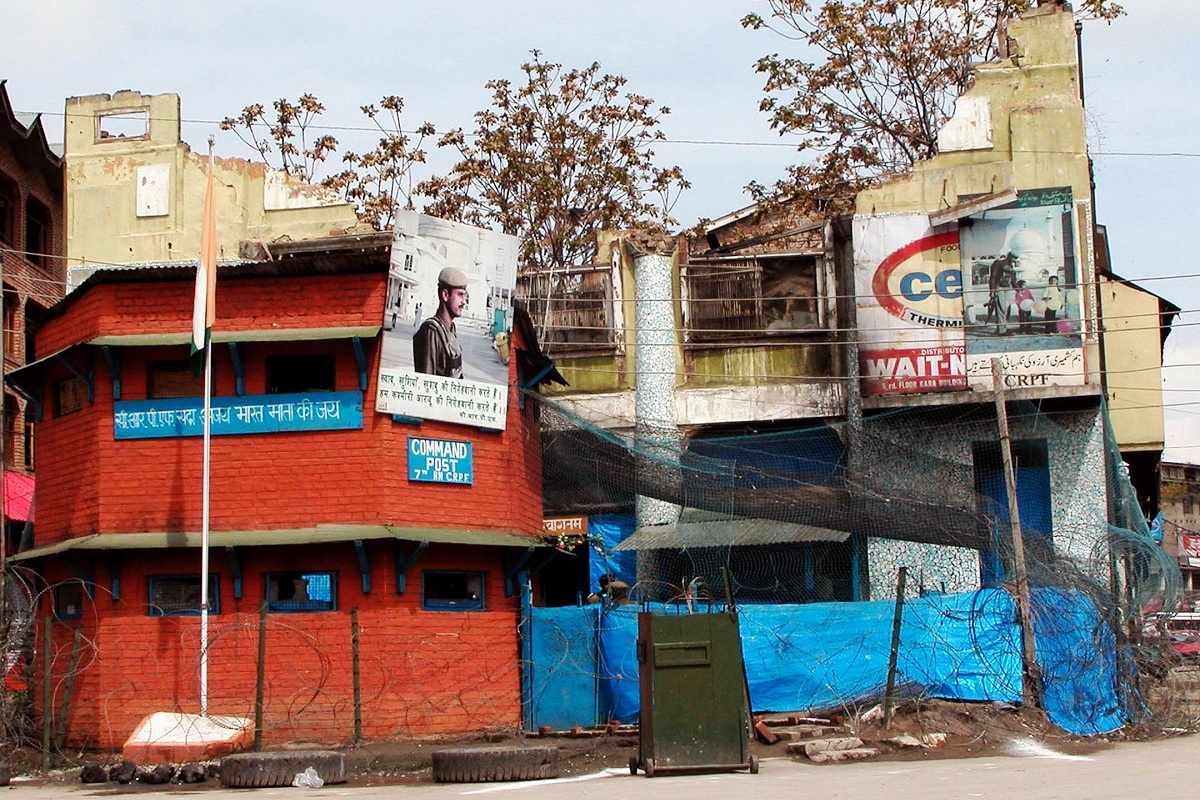PDP’s Zuhaib Yousf Mir calls Kashmir a ‘depressed society’
Amid drug menace and growing unemployment, the region is becoming udta Kashmir, he said.
The relation between Jammu and Kashmir and films is legendary but this relation got snapped in 1990 when terrorism broke out in J&K and film producers chose to shift to shooting locations in Kulu and Manali of Himachal Pradesh that were almost identical to those of Kashmir.

Ruins of Palladium Cinema in Srinagar house a CRPF post after being burnt down by terrorists.
Seeking to bring back filmmakers to Kashmir that they had mostly shunned 31 years ago due to terrorism, the Jammu and Kashmir government on Friday officially sanctioned implementation of the Film Policy—2021. Principal Secretary, Department of Information, Rohit Kansal, issued an order to this effect along with detail of the incentives for the filmmakers.
The relation between Jammu and Kashmir and films is legendary but this relation got snapped in 1990 when terrorism broke out in J&K and film producers chose to shift to shooting locations in Kulu and Manali of Himachal Pradesh that were almost identical to those of Kashmir.
Advertisement
Cinema halls across the Kashmir valley were either burnt or forced to shut down because terrorists considered entertainment as un-Islamic. Successive governments have vainly tried to revive the cinema halls.
Advertisement
Under the first-ever film policy, Jammu & Kashmir government is trying to make the best possible efforts towards the creation of a vibrant film ecosystem in the UT. To realize the objective, a film development council (JKFDC) headed by a senior bureaucrat will be established.
The JKFDC will strive to develop Jammu & Kashmir as an important destination for film production by providing beneficial incentives to the film producers and administrative assistance to ease film making in the Jammu & Kashmir by setting up a single-window cell to grant permission for shooting films, preferably within 2 to 4 weeks.
The UT government also aims to link tourism and films to give a push to the tourism industry that has suffered losses during the past couple of years. Cinema has also played a major role in promoting tourism by familiarising the viewers with a large number of scenic and culturally rich locations. Not only is cinematic tourism an excellent vehicle for destination marketing, but it also presents new product development opportunities, such as location tours, film museums, exhibitions and theming of existing tourist attractions with a film connection, the policy says.
The global impact of cinema is increasing day by day and therefore the Government of India has decided to accord the status of industry to films.
In 1960, Kashmir was quite popular amongst Bollywood directors who endeavoured to capture the beauty of the region in the best way they could. Films like Kashmir Ki Kali, Jab Jab Phool Khile, Himalaya Ki God Mein, and Janwar, made Srinagar and Gulmarg popular destinations with people marvelling at their scenic and pristine beauty. Throughout 1970 and 1980, Jammu & Kashmir remained a preferred film shooting location.
The scenic landscape of Jammu & Kashmir charmed not only the Indian filmmakers but also some international ones as well. Two films – Bill Murray’s The Razor’s Edge in 1983, and The Climb (UK Film) in 1986 were also shot in varied locations of Kashmir Valley.
Famous producer of Munna Bhai MBBS and Mission Kashmir, Vidhu Vinod
Chopra’s Shikara has just concluded shooting in J&K along with Sargoshiyan produced by Imran Khan Productions and Laila Majnu produced by Imtiyaz Ali.
Advertisement